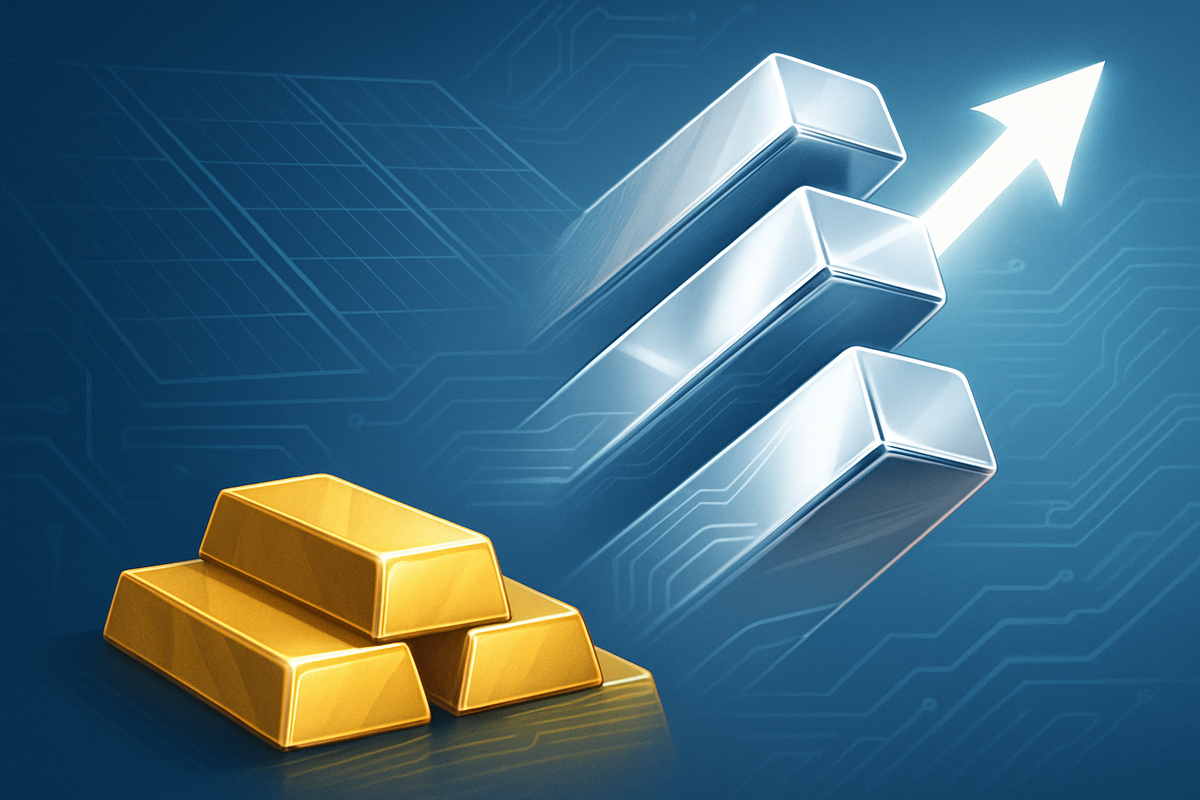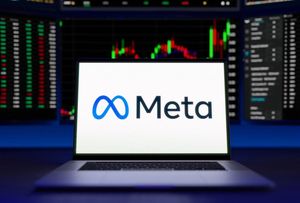
The period spanning Diwali 2024 to Diwali 2025 has etched itself into the annals of precious metals history, witnessing a dramatic and decisive outperformance of silver over its yellow counterpart, gold. As the global economy grappled with shifting monetary policies and burgeoning technological demands, the industrial metal surged, delivering exceptional returns that have recalibrated investor portfolios and sparked renewed interest in the often-overlooked precious commodity. This remarkable rally signals a potential paradigm shift in the precious metals market, with profound implications for investors, miners, and industries reliant on silver's unique properties.
The immediate implication of silver's meteoric rise is a significant re-evaluation of its role as both a safe-haven asset and an industrial commodity. While gold maintained its traditional appeal as a hedge against inflation and geopolitical instability, silver's dual nature – combining investment demand with critical industrial applications – propelled it to unprecedented gains. This performance underscores a market increasingly driven by fundamental supply-demand dynamics, particularly from the burgeoning green energy sector, positioning silver as a key beneficiary of the global transition to sustainable technologies.
Silver's Stellar Ascent: A Deep Dive into its Dominance
Between Diwali 2024 (October 31, 2024) and Diwali 2025 (October 20, 2025), silver delivered a performance nothing short of spectacular, consistently outpacing gold in percentage gains. While gold also experienced a robust rally, reinforcing its safe-haven status, silver's trajectory was steeper and more aggressive. Spot silver prices surged to an all-time high above $50 per troy ounce, briefly touching $51.2 on October 9, 2025, and settling around $52.12 per ounce by Diwali 2025. In India, silver prices soared from approximately ₹94,631 per kilogram around Diwali 2024 to an astonishing ₹1,53,980 per kilogram, with some spot prices reaching ₹1,72,000 per kilogram. This translated to a stunning 60% to over 90% gain in various metrics, significantly eclipsing gold's commendable 60% to 71% increase over the same period.
The timeline of this outperformance was marked by a steady accumulation of bullish factors. Following a strong close to 2024, silver began its aggressive ascent in early 2025, gaining significant momentum from April onwards. This surge was primarily fueled by a confluence of robust industrial demand, persistent supply deficits, and a surge in investment interest. The market reaction was overwhelmingly bullish, with analysts and investors increasingly acknowledging silver's fundamental strengths and its potential for continued growth, particularly as the gold-to-silver ratio began to compress, indicating silver's relative undervaluation.
Key players involved in this rally include major silver mining companies, institutional investors, and individual retail investors, particularly in regions like India where festive buying traditions intersect with growing investment sophistication. Central banks' monetary policies, especially the anticipated interest rate cuts by the Federal Reserve in 2025, also played a crucial supportive role by reducing the opportunity cost of holding non-yielding precious metals and contributing to a weaker US dollar, making dollar-denominated commodities more attractive.
Corporate Fortunes: Winners and Losers in the Silver Rush
The dramatic surge in silver prices has created clear winners and losers across the financial landscape, particularly within the mining sector and industries reliant on the metal. Silver mining companies, especially those with primary silver operations or significant silver by-product streams, are poised for substantial gains. Companies like Fresnillo Plc (LSE: FRES), Pan American Silver Corp. (NASDAQ: PAAS), Wheaton Precious Metals Corp. (NYSE: WPM), and Hecla Mining Company (NYSE: HL) are likely to see significant boosts to their revenues, profitability, and stock valuations. Higher silver prices directly translate to improved margins and increased cash flows, allowing for greater capital expenditure, debt reduction, or enhanced shareholder returns.
Conversely, gold-focused miners, while benefiting from gold's own strong performance, may find their relative appeal diminished compared to their silver-heavy counterparts. Major gold producers such as Newmont Corporation (NYSE: NEM) and Barrick Gold Corporation (NYSE: GOLD) will still thrive in a strong precious metals market, but the exceptional percentage gains in silver might lead investors to rebalance portfolios towards silver-leveraged assets. Beyond mining, industries that heavily utilize silver in their manufacturing processes, such as solar panel manufacturers, electronics companies, and electric vehicle (EV) producers, might face increased input costs. However, given the inelastic demand for silver in these critical applications due to its superior conductivity and efficiency, these costs are often absorbed or passed on, rather than leading to a reduction in demand. In fact, the consistent demand from these sectors is precisely what fuels silver's price appreciation.
Broader Implications: A Catalyst for Commodity Market Shifts
Silver's outperformance between Diwali 2024 and Diwali 2025 is not an isolated event but rather a potent indicator of broader shifts occurring within the commodity markets and the global economy. This rally fits squarely into the overarching trend of increasing demand for "green" metals and critical raw materials essential for the energy transition. Silver's pivotal role in solar photovoltaics, electric vehicles, and 5G technology positions it at the forefront of this industrial revolution. The sustained structural supply deficit, exacerbated by underinvestment in new mining projects and the nature of silver as a by-product of base metal mining, underscores a fundamental imbalance that is likely to persist.
The ripple effects extend beyond the precious metals sector. This event highlights the growing importance of industrial commodities in a decarbonizing world, potentially drawing more investment capital into base metals and other materials crucial for infrastructure development and technological advancement. Regulatory and policy implications are also significant; governments worldwide, keen on meeting climate targets, may look to secure supplies of critical minerals like silver, potentially influencing trade policies, mining regulations, and strategic reserves. Historically, periods of strong economic growth and technological innovation have often seen silver outperform gold, as its industrial demand component comes to the fore. This current cycle mirrors such precedents, amplified by the unprecedented scale of the global energy transition.
What Comes Next: Navigating the Future of Precious Metals
Looking ahead, the short-term outlook for silver remains largely bullish, supported by continued industrial demand, particularly from the solar and EV sectors, and sustained investment interest. However, silver's inherent volatility, often dubbed "the devil's metal," suggests that short-term corrections are always a possibility. Long-term, the structural bull market for silver appears intact, with analysts projecting prices to potentially reach higher targets in 2026 and 2027 as the supply deficit persists and green energy adoption accelerates.
For investors, this period presents both opportunities and challenges. Strategic pivots may involve increasing exposure to silver-backed ETFs or physical bullion to capitalize on its growth potential, while maintaining a core holding in gold for diversification and safe-haven stability. Mining companies might focus on optimizing existing operations, exploring new silver-rich deposits, or expanding by-product recovery from base metal mines. Market opportunities could emerge in innovative silver-saving technologies or recycling initiatives to address supply constraints. Conversely, challenges might include navigating potential price volatility and managing rising production costs. Potential scenarios range from a continued steady ascent, driven by fundamentals, to more aggressive spikes if geopolitical tensions escalate or if a significant industrial breakthrough further boosts demand.
Comprehensive Wrap-up: Silver's Enduring Impact
The period between Diwali 2024 and Diwali 2025 will be remembered for silver's definitive outperformance over gold, a testament to its evolving role in the modern economy. Key takeaways include the critical importance of industrial demand, particularly from green technologies, in driving silver prices, the persistent structural supply deficit, and the renewed confidence of investors in silver's growth trajectory. This event underscores that while gold remains a crucial safe-haven asset, silver offers a unique blend of monetary and industrial appeal, making it a compelling investment in an era of technological transformation.
Moving forward, the market will likely continue to assess the balance between industrial consumption and investment demand for silver. Investors should closely watch global economic growth indicators, especially those related to manufacturing and renewable energy, as well as central bank monetary policies. Geopolitical developments and the ongoing narrative around inflation will also play a significant role in shaping precious metal prices. The lasting impact of this silver surge is likely to be a re-evaluation of its intrinsic value and its position as a strategically important commodity for the 21st century.
This content is intended for informational purposes only and is not financial advice





